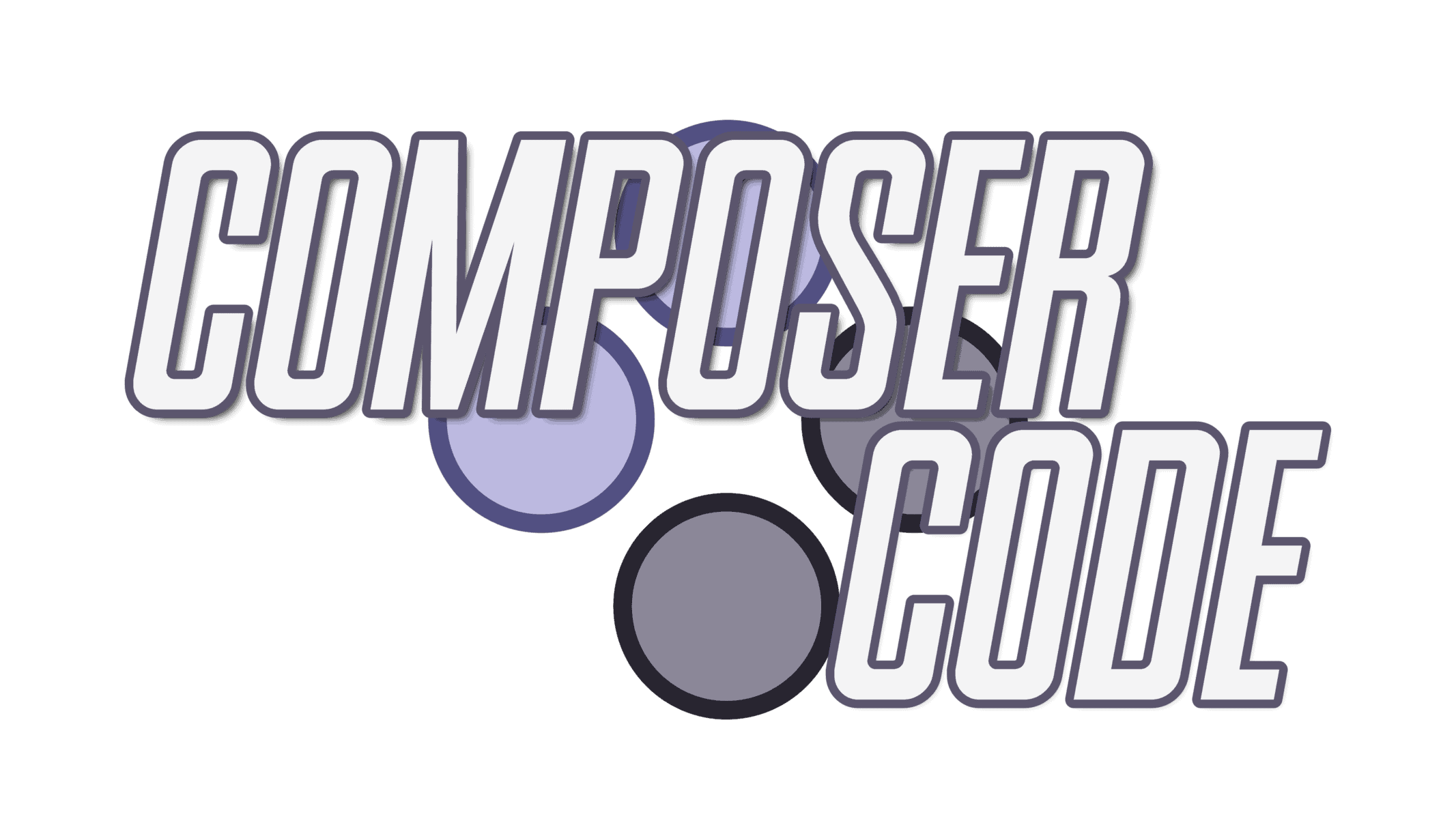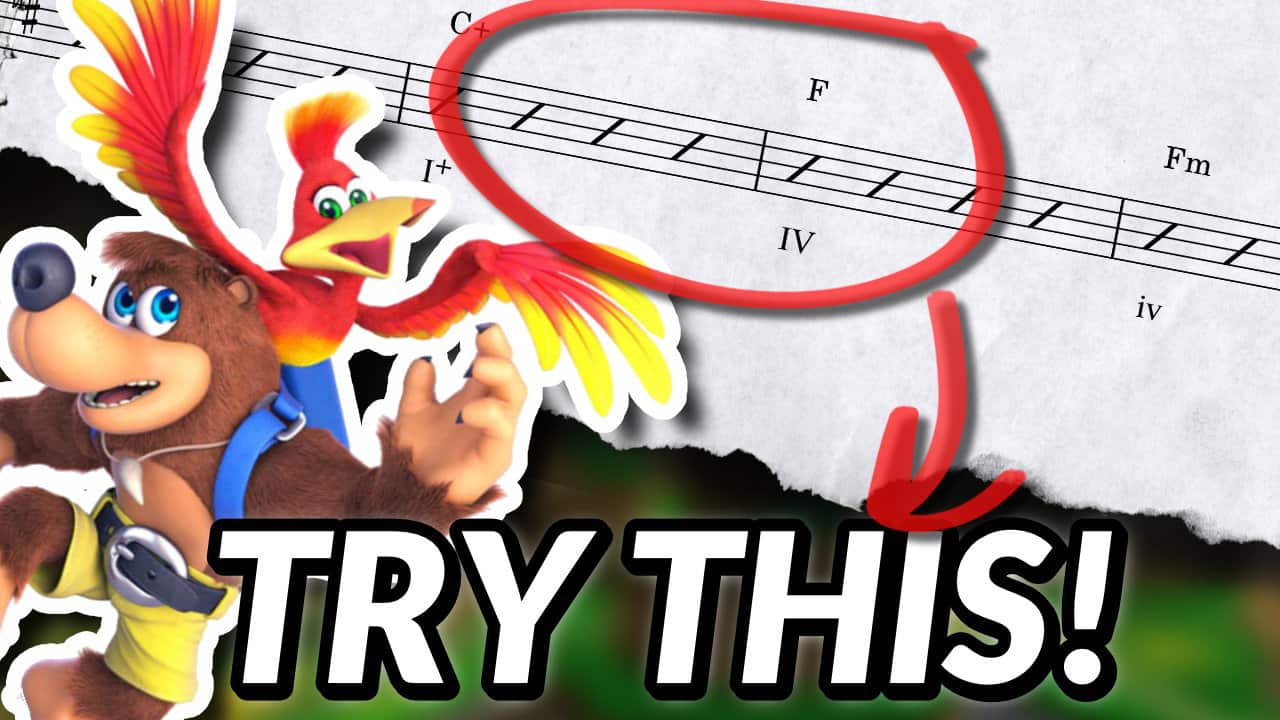If you feel like you write the same boring, dry, predictable progressions every time you sit down to write music, I’m gonna help you get out of that rut.
Let’s explore 13 of the most interesting, practical, and (sometimes) downright spicy chord progressions from video game soundtracks. I invite you to steal these and use them to enhance your own compositions or productions.
If you want to hear these progressions in action, watch the video here:
Progression 1: ii – V – I
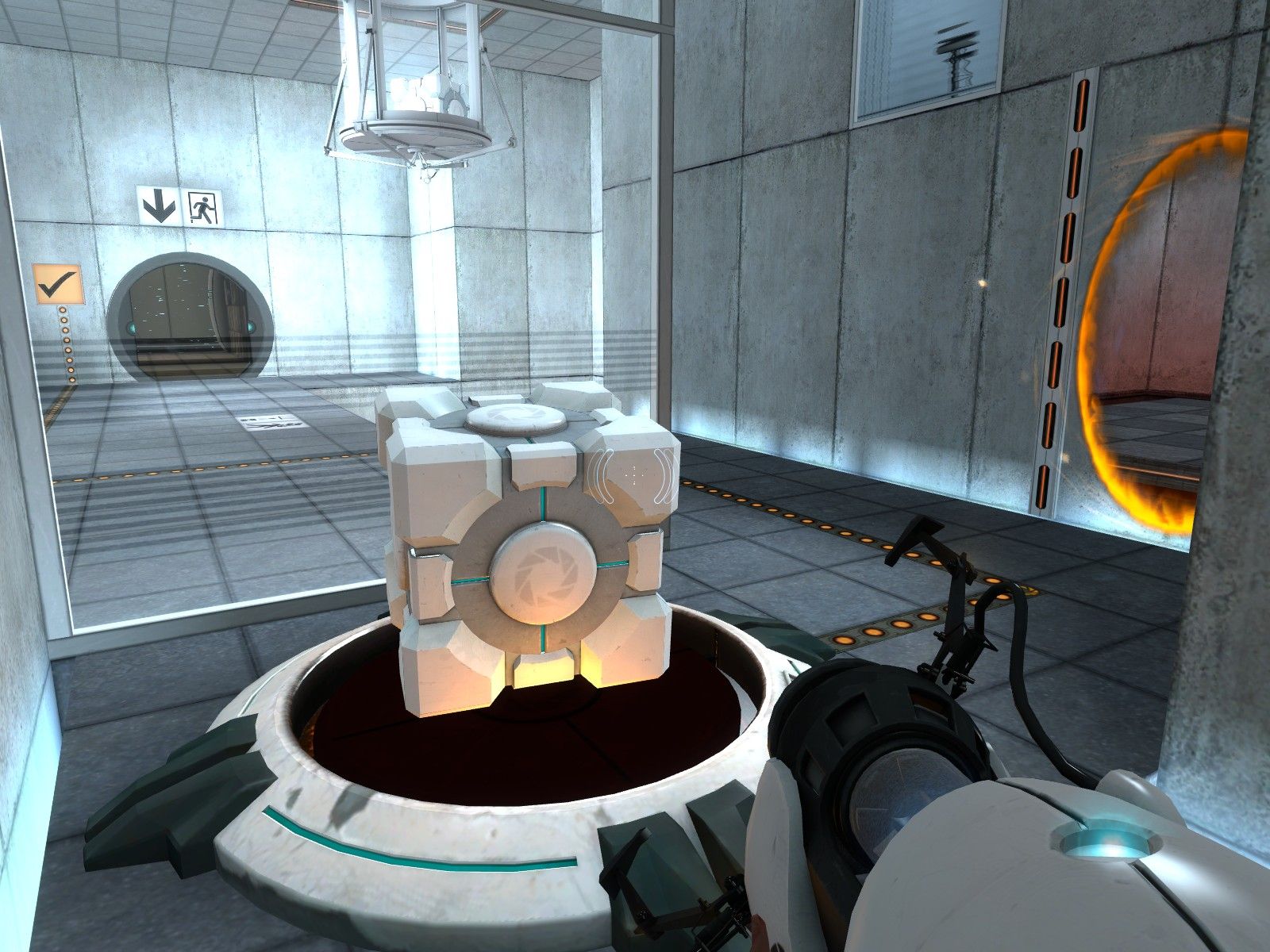
The first progression is one of the most common in the whole of Western harmony, especially jazz harmony. It’s all over video game music, and you’ll hear it several times throughout this list.
We see it in the Portal End Credits theme, Still Alive (composed by Jonathan Coulton).
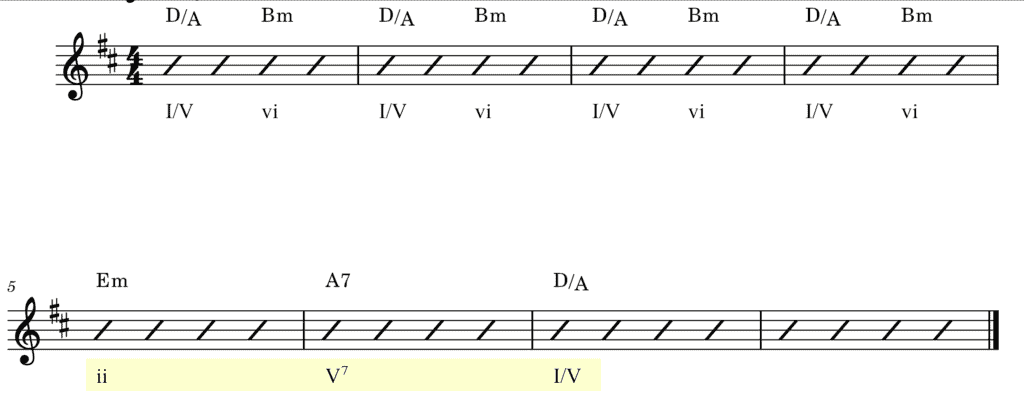
I stayed up all night in college and beat this game in one sitting on the original Orange Box and it was probably the most memorable gaming moment for me.
Imagine experiencing a game like Portal and then hearing this song at the end while the credits rolled. I sat there with the controller in my hand, jaw on the floor, and just listened.
The ii – V – I progression is really the swiss army knife of chord progressions. It can help you modulate to different keys, it hits every pitch in a given scale so it’s really good at establishing a tonal center, and it can take a really vanilla chord progression and make it interesting.
I have a free lesson in my course on the fundamentals of game composition all about the ii – V – I. If you want to dive deeper, click here.
Progression 2: IVmaj7, iii7, ii7, Imaj7
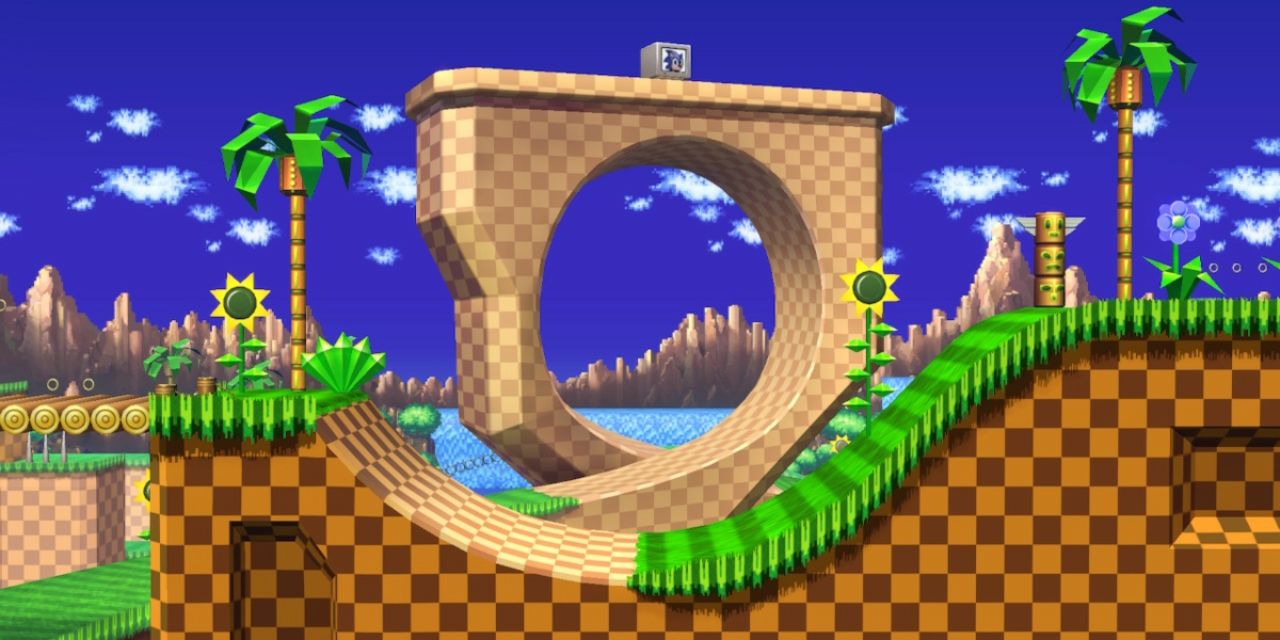
Now maybe you want to get back to the I chord, but you don’t want to do it so strongly as in the case of the ii – V – I. This next progression will certainly do the trick. It’s featured prominently in the very first video game I ever played as a kid.
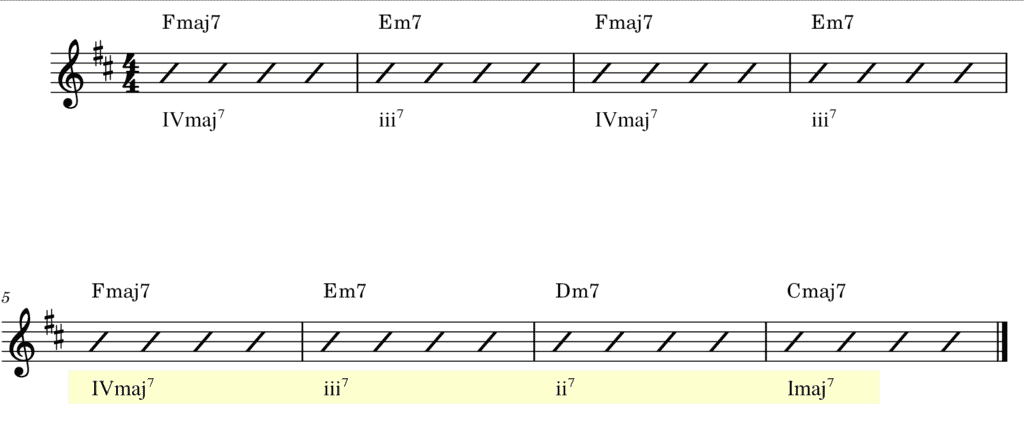
The addition of the 7th chord degrees adds a jazzy flavor and makes it a really fun progression to play and write over.
It’s used at least two other times in the Sonic the Hedgehog soundtrack. Listen for it in the Special Stage music as well as the B section of Spring Yard Zone.
Progression 3: Victory Theme
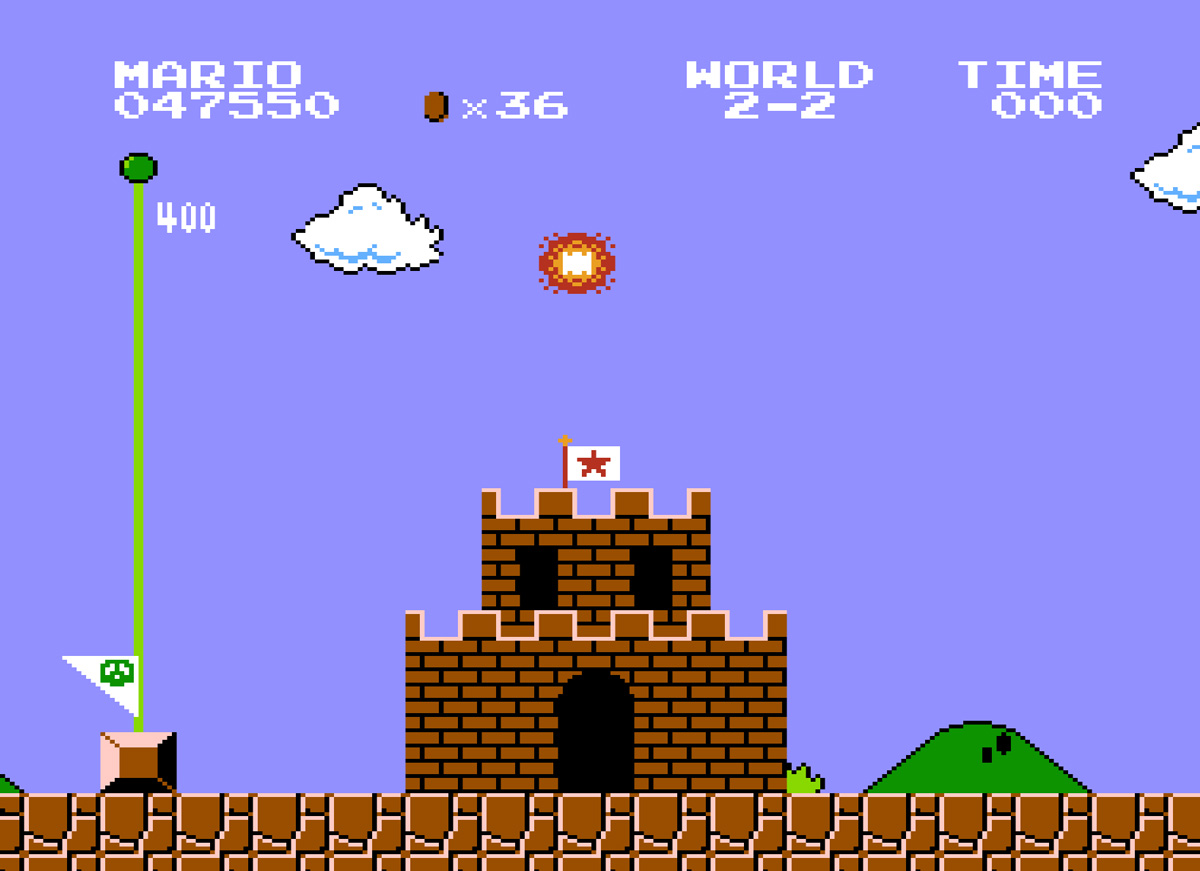
Our next chord progression is often called the “victory” progression because of its use in the most iconic game of all time, as well as many other games after that.
If you’re looking to evoke an emotion of triumph or victory or success, look no further.

The real MVPs of this progression are the ♭VI and ♭VII chords, which are borrowed chords from the parallel minor key. Meaning, if you’re playing in C major, you’d borrow these chords from C minor.
That IV – V – ♭VI – ♭VII in all major chords really dials up the “triumph” feeling to 11.
Progression 4: Tritone Substitution

If you want to be like me and fake your way into some jazz music, there’s no better way to do that than through a tritone substitution. It’s a great way to resolve back to the I chord, as you can hear in this underrated little track from Super Mario World.

A tritone substitution is so named because it’s substituting the V chord, which would normally come before the I chord in a standard dominant to tonic resolution. Instead of playing the V chord, you play a chord one tritone away from the V chord.
This just happens to be the ♭II7 chord. This enables the bass to move chromatically down from the II to the ♭II7 to the I.
Voila! Instant jazz.
Progression 5: Aquatic Extensions

Speaking of jazz, this next progression is composed by the first guy to put Neo-Soul chords into a video game and make a water level halfway bearable.
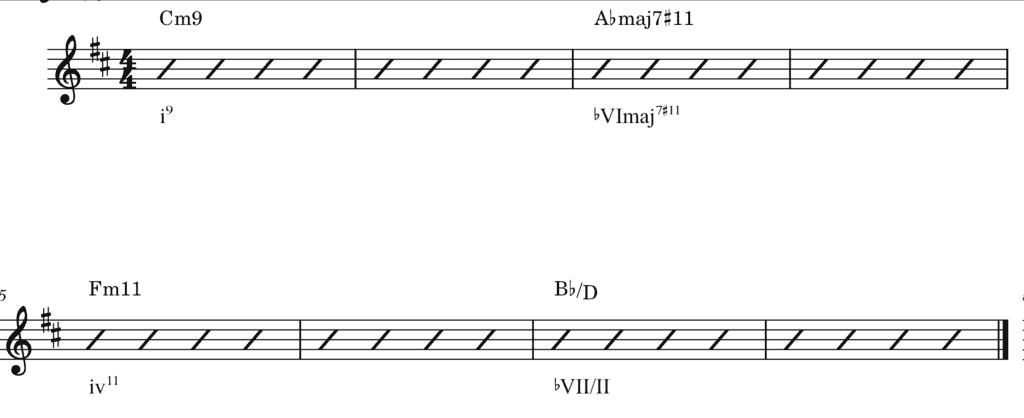
My biggest takeaway from this progression is the power of interesting extensions to create atmosphere. I mean, it’s in the name: Aquatic Ambiance. There’s a big difference between a vanilla Cm to Ab, and a Cm9 and Abmaj7#11.
Progression 6: Spiral Mountain

Our next progression comes from an iconic ‘90s classic. As a child, I entered a contest on Cartoon Network to win this game and an N64. For some reason, I was terrified they would reject my entry because of my terrible handwriting.
20 years later I interviewed the composer of this game (Grant Kirkhope) on my podcast.

This progression is just chock full of awesome little moves. First off, we have the I to major III to minor vi. The III in the key of C is actually supposed to be iii (E minor), but Grant plays an E major to set up that nice strong resolution to the Am.
Then, he goes to the major II7 – V7 – I. Now if you’re a fan of folk music you may remember this from the Bright Eyes song This is the First Day of my Life. It’s the same progression!
It doesn’t end there! We go I – I+ – IV – iv. That’s sort of a play on the typical Plagal Cadence, and I’m obsessed with it.
Then he tops it off with this really fun little I – V – ♭VI – V – I.
So there you go! Three new progressions to try for the price of one.
Progression 7: Dorian World

The next track is a master class in writing fantasy medieval or just RPG music in general.

A big part of that sound is in the Dorian mode. I like to think of the Dorian mode as a minor scale with a natural 6th as opposed to the typical flattened 6th.
It still retains the minor tonality but it’s a lot less melancholic and dramatic. That natural sixth (especially when played in chords) gives it that glimmer of hope.
Progression 8: Milk Bar
.png&f=1&nofb=1)
This progression is chipper and fun – a direct contrast to the game in which it’s featured, The Legend of Zelda: Majora’s Mask. It’s good enough to be a mainstream country song.

I talk about this in more detail in my video breakdown, but a “hack” to creating country vibes is to take all your minor chords and make them major/dominant chords. Try it out!
Progression 9: Astral Observatory

Hey, I can’t help it that Zelda games (specifically the N64 Zeldas) have some of the best music of all time. This tune seems to take inspiration from Bach and features a lot of really interesting harmonic movies.

As you can see from the sheet music, the Em7b5 is actually setting up a minor ii – V – I progression targeting the D minor chord. From there, we walk the bass down and hit that powerful G/B chord (this is the one straight from Bach).
That’s a II/♭V chord, which doesn’t seem like it would sound very good. But it sounds incredible, especially when the bass motion is supporting it.
Progression 10: Chromatic Ranch

The Lon Lon Ranch theme is one of the most pastoral, sweet tracks in all of VGM. However, it’s chock-full of deceptively spicy chords.
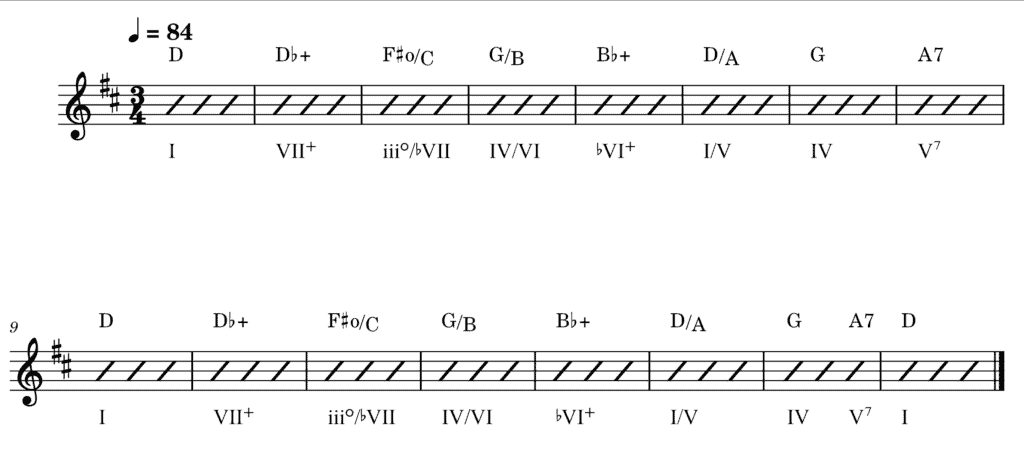
Everything in this progression revolves around that chromatically descending bassline. I don’t think Koji Kondo set out to write jazzy chords. I think he probably started with his bassline, and then asked himself, “now how do I create a harmony that supports this?”
Next time you’re in a rut, try starting your composition by writing your bassline. It’s worked for me!
Progression 11: Gerudo Valley and the Harmonic Minor Scale

If the Dorian mode is the key to writing fantasy or medieval music, the harmonic minor scale is the key to writing western or Latin music. The harmonic minor scale takes the typical flattened 7th and raises it back up to a natural 7th. This gives composers that strong leading tone back into the tonic.

We hear the harmonic scale most prominently in this piece when it hits that C# major chord (as opposed to the typical C#m which is present in normal minor keys).
Progression 12: Brinstar’s Chromatic Mediant

The next progression is from one of Nintendo’s darkest first-party series. It manages to be brooding, and dark, and multi-layered without using a single minor chord.

This piece utilizes a move that’s very popular in film scores – the chromatic mediant (♭III) chord. Because you’re departing from the typical major scale, it feels jarring without feeling melodramatic.
If you want your piece to sound darker without sounding sadder, try using major chords (like the chromatic mediant) borrowed from other keys.
Progression 13: To the Moon!

This tune kind of came out of nowhere but has since become one of the most beloved classic video game tunes of all time.

I could write a dissertation on all the incredible things happening in this piece. I’ll try to keep things brief.
I love this tune’s judicious use of slash chords. Slash chords, or inversions, are just normal chords but with an added instruction for what the bass should be doing.
They’re especially useful for facilitating interesting bass motion (like we saw in Lon Lon Ranch).
Another thing I love about this piece is the passing diminished chord (C°) that bridges the game between the B and C#sus4 chords. This doesn’t even take into consideration the incredible modulation in the B section (I’ll have to save that for another time). 🙂
Putting these progression to work!
If you’re ready to take the next step and use these progressions in your own tunes, check out these resources:
